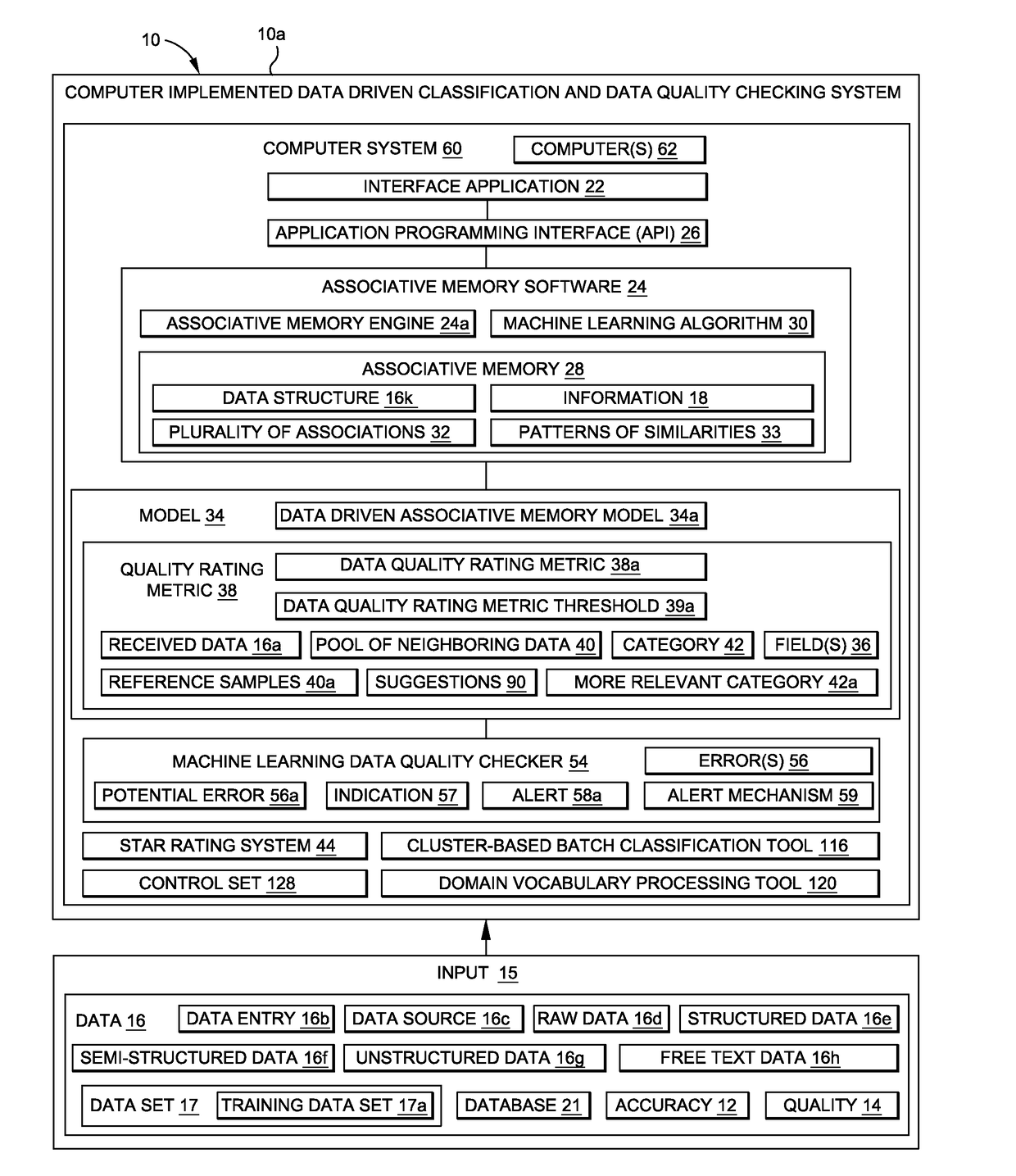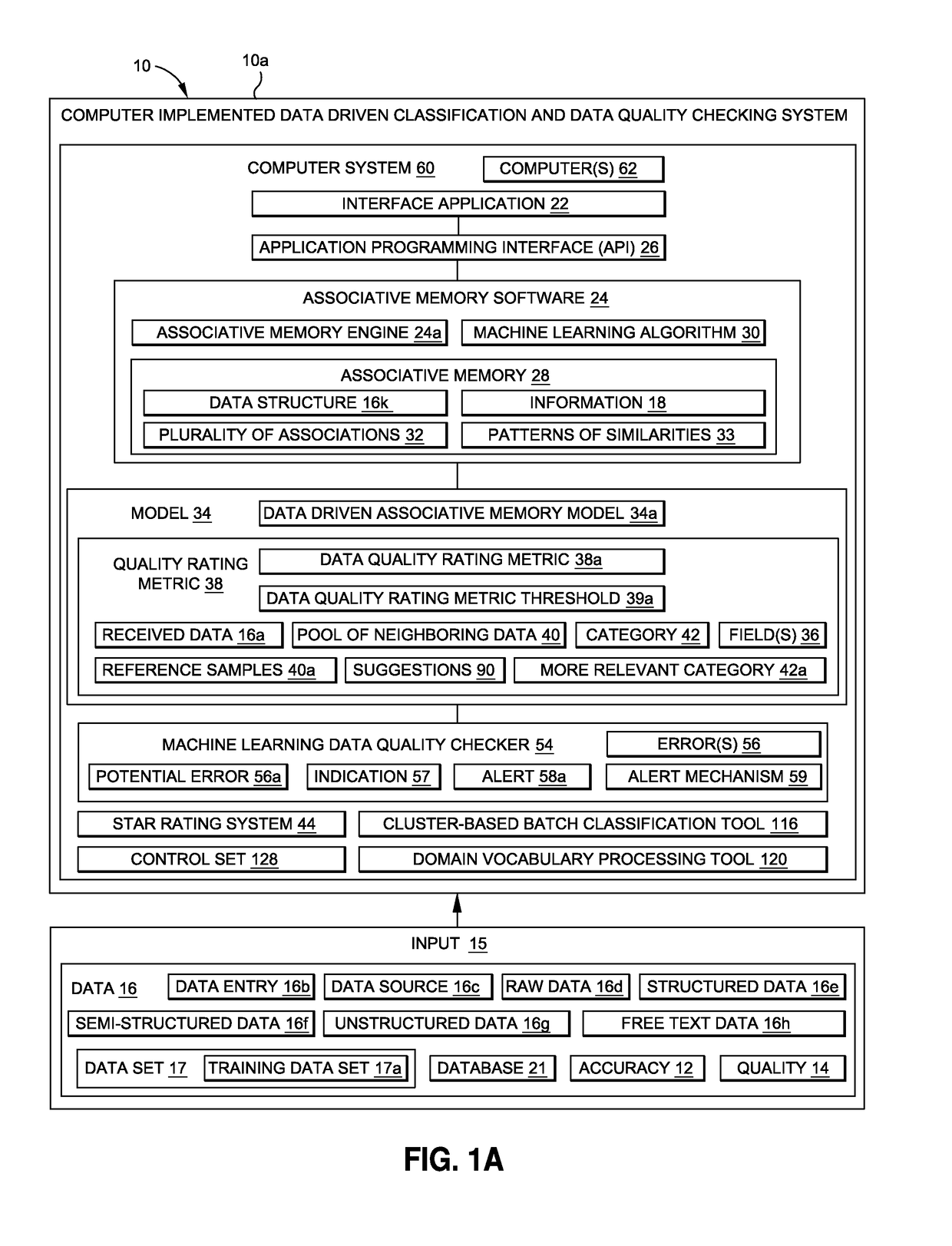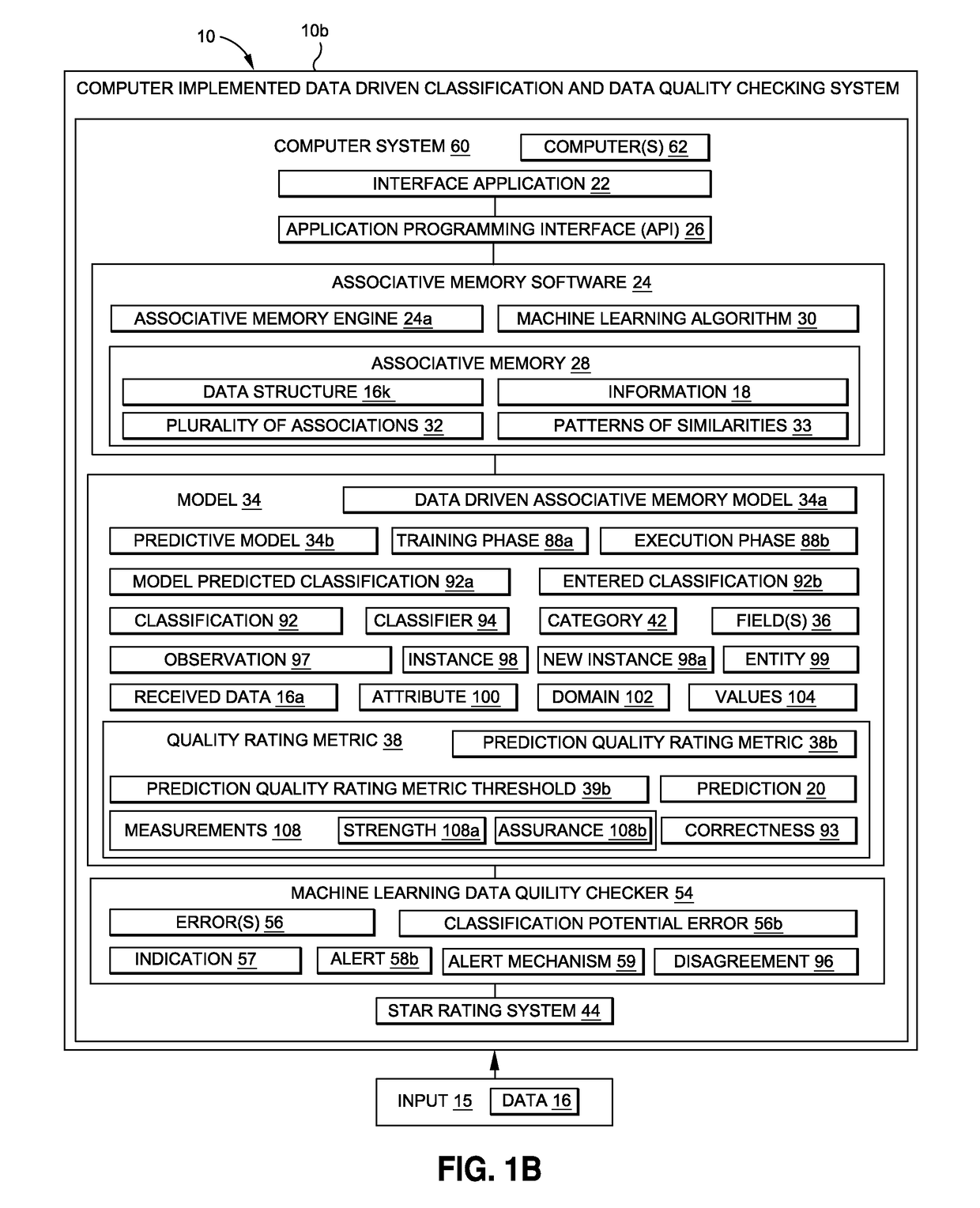Data driven classification and data quality checking method
a data quality and data technology, applied in the field of machine learning data classification systems and methods, can solve problems such as difficult use in making industry or technical data decisions, data quality errors may occur in data entry systems, and high cost, and achieve the effect of improving accuracy and quality, reliable and efficien
- Summary
- Abstract
- Description
- Claims
- Application Information
AI Technical Summary
Benefits of technology
Problems solved by technology
Method used
Image
Examples
Embodiment Construction
[0053]Disclosed embodiments will now be described more fully hereinafter with reference to the accompanying drawings, in which some, but not all of the disclosed embodiments are shown. Indeed, several different embodiments may be provided and should not be construed as limited to the embodiments set forth herein. Rather, these embodiments are provided so that this disclosure will be thorough and fully convey the scope of the disclosure to those skilled in the art.
[0054]Now referring to the Figures, FIG. 1A is an illustration of a functional block diagram showing an exemplary embodiment of a computer implemented data driven classification and data quality checking system 10, such as in the form of computer implemented data driven classification and data quality checking system 10a, of the disclosure, with an embodiment of a quality rating metric 38, such as in the form of a data quality rating metric 38a.
[0055]As shown in FIG. 1A, the computer implemented data driven classification ...
PUM
 Login to View More
Login to View More Abstract
Description
Claims
Application Information
 Login to View More
Login to View More - R&D
- Intellectual Property
- Life Sciences
- Materials
- Tech Scout
- Unparalleled Data Quality
- Higher Quality Content
- 60% Fewer Hallucinations
Browse by: Latest US Patents, China's latest patents, Technical Efficacy Thesaurus, Application Domain, Technology Topic, Popular Technical Reports.
© 2025 PatSnap. All rights reserved.Legal|Privacy policy|Modern Slavery Act Transparency Statement|Sitemap|About US| Contact US: help@patsnap.com



